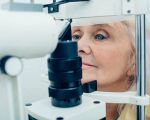- 1-Understanding Ocular Histoplasmosis and Its Impact
- 2-Key Symptoms to Recognize for Early Detection
- 3-Importance of Prompt Medical Help for Ocular Histoplasmosis
- 4-Diagnosis and Treatment Options Available
- 5-Real-Life Case Highlighting Early Recognition
- 6-How Eye Docs Support Timely and Effective Patient Care
1. Understanding Ocular Histoplasmosis and Its Impact
Ocular histoplasmosis is a rare eye condition caused by a fungal infection from Histoplasma capsulatum spores, typically inhaled from environments rich in bird or bat droppings. While it primarily affects the lungs, the infection can also damage the eyes, leading to vision problems or even vision loss if untreated.
Recognizing ocular histoplasmosis early is vital because the disease can progress silently before noticeable symptoms appear. This infection usually affects the retina and choroid, causing scarring that impairs central vision.
1.1 Who Is at Risk?
People living in regions where histoplasmosis is endemic—such as the Ohio and Mississippi River valleys—are at higher risk. Individuals with weakened immune systems may experience more severe symptoms and complications.
2. Key Symptoms to Recognize for Early Detection
Knowing how to recognize symptoms of ocular histoplasmosis can make a significant difference in timely diagnosis. Common early signs include:
1. Blurred or Distorted Vision: Patients may notice wavy or blurred areas, often in one eye, affecting reading or driving.
2. Blind Spots: Small areas in the visual field may become dark or missing.
3. Sensitivity to Light: Increased discomfort when exposed to bright lights can occur.
4. Difficulty Seeing at Night: Reduced night vision or problems adjusting to low light.
2.1 When to Seek Medical Attention
If you experience any combination of these symptoms, especially if you live in an endemic area, it’s crucial to seek medical evaluation promptly to prevent permanent damage.
3. Importance of Prompt Medical Help for Ocular Histoplasmosis
Prompt diagnosis and treatment are essential because ocular histoplasmosis can lead to serious complications such as choroidal neovascularization, which may cause irreversible vision loss. Early intervention can slow or halt disease progression.
Ignoring symptoms or delaying treatment increases risks. Eye specialists can monitor the condition closely and recommend appropriate therapies tailored to disease severity.
4. Diagnosis and Treatment Options Available
Diagnosis typically involves a comprehensive eye exam, including retinal imaging and fluorescein angiography to detect lesions and blood vessel abnormalities. Blood tests may also help confirm exposure to the fungus.
Treatment depends on severity but often includes:
Anti-inflammatory Medications: To reduce retinal inflammation.
Laser Therapy or Photodynamic Therapy: To seal leaking blood vessels and prevent vision loss.
Anti-VEGF Injections: To inhibit abnormal blood vessel growth.
4.1 Ongoing Monitoring
Because ocular histoplasmosis can reactivate, regular follow-ups with an eye doctor are important to catch new symptoms early.
5. Real-Life Case Highlighting Early Recognition
Mark, a 45-year-old outdoor enthusiast from Missouri, noticed subtle vision distortion but initially ignored it. After learning about ocular histoplasmosis from a community health talk, he sought evaluation. Early diagnosis and treatment preserved his vision, illustrating the power of awareness and prompt action.
6. How Eye Docs Support Timely and Effective Patient Care
At Eye Docs, we emphasize educating patients on how to recognize symptoms of ocular histoplasmosis and get medical help promptly. Our specialists provide thorough exams, cutting-edge diagnostics, and personalized treatment plans to protect your vision.
If you experience symptoms or have concerns about ocular histoplasmosis, consult Eye Docs for expert care. Early attention can make all the difference in maintaining healthy eyesight.








